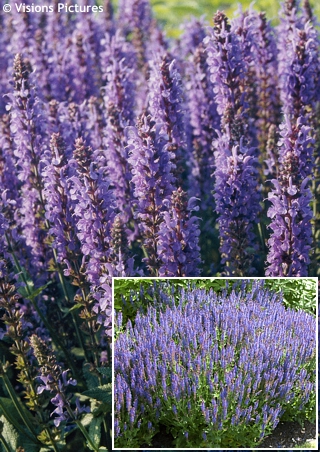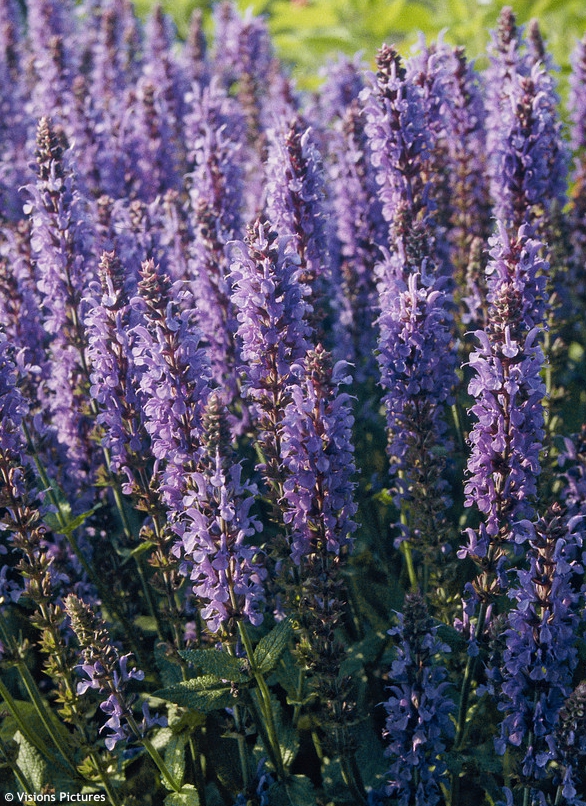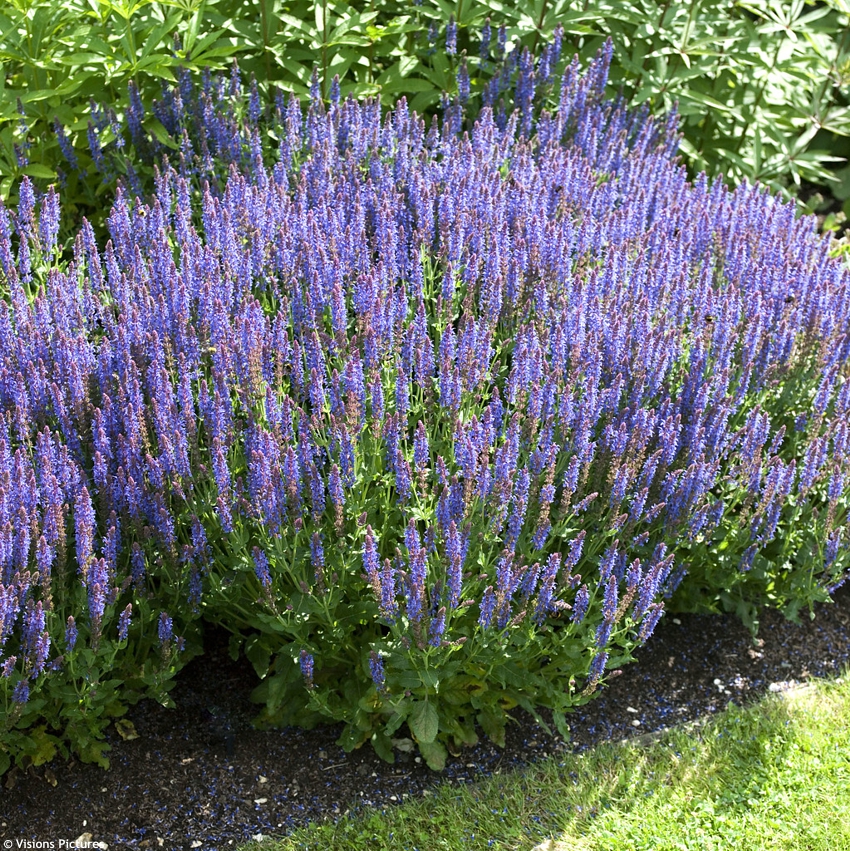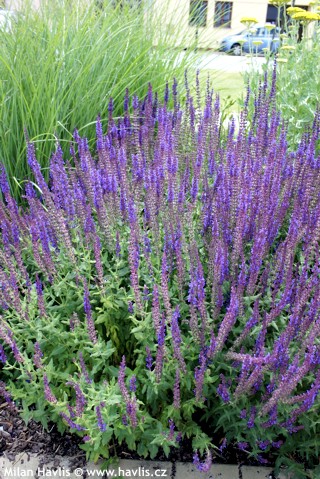Salvia nemorosa 'BLAUHÜGEL' (BLUE HILL) woodland sage
size/type
low perennial,low perennial
usual height
0,3-0,4m
usual width
0,3-0,5m
leaves
deciduous broadleaf
colour of leaves
flowers
showy
colour of flowers
blooming time
June-July
location
full to partial sun
USDA zone (lowest)
3 (down to -40°C)
winter protection
for zone 5+6

for zone 7

categorized
Salvia
Salvia is a large genus, containing about 900 species. In our climate mostly common (evergreen) sage is grown for culinary uses. Also, very popular are those of subtropical origin that are used here as annuals with long flowering season, especially in public areas. We concentrate on herbaceous perennials which are not widely cultivated and we believe that there are species, hybrids, and varieties worth the job.Description of the plant:
Blauhügel is a woodland sage commonly sold as Blue Hill in English speaking countries. It makes charming, pastel violet to pale violet blue flowers in spike-like inflorescence atop only 30-40 cm tall, upright stems. Flowering usually begins in mid June and continues for 4-6 weeks. If you cut the whole plant back to the ground after the first flowering phase, and feed it a little, it will re-grow into a nice and bushy clump with plenty of flowering stems offering the same show in late summer. Leaves are 4-5 cm long, mid green, narrowly ovate, wrinkled, and softly hairy. The plant makes uniform and neat mounds which look like violet blue clouds. Bred by German specialist Ernst Pagels (1913-2007).Sage will grow in almost any well-drained soil. For best results grow it in light, humus-rich, well-drained soil in full sun or light shade. It needs no fertilizing, only in very poor or compacted soils it will benefit from occasional feeding with a balanced fertilizer. In early spring remove all above-ground parts except for rosette of new or over-wintered, healthy leaves lying flat on the ground. It is perfectly hardy to about -34°C (USDA zone 4) and will grow in outdoor pots and throws, too.
Last update 01-07-2020
QUICK PRICE OVERVIEW
CURRENTLY SOLD OUT


















